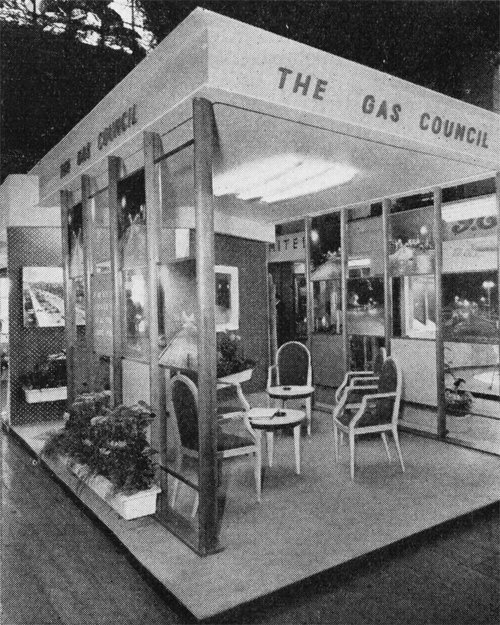|
british commercial gas association / british gas council

|
British Commercial Gas Association / British Gas Council
One Grosvenor Place
London
SW1
|
The Executive Chairman was Sir Francis Goodenough, who set up the association in 1911, and held the post
until his retirement in 1936. (Goodenough originally was in charge of the sales department of the
Gas Light & Coke Company, the largest gas undertaking in the world).
It was set up to represent the commerical interests of the whole gas industry.
Sir Francis Goodenough was the manager of the sales department
(of the Gas Light & Coke Company.)
"He took a census of the company's district to gauge its possibilities, trained a
special body of salesmen, engaged women experts in domestic science to demonstrate the
use of gas appliances, and advertised the company's service in the newspapers. In consquence,
many other gas undertakings and gas appliance makers benefited from the company's advertising.
Some actually offered to bear part of the cost. This suggested the idea that a national scheme
of advertising might be floated, with contributions from gas undertakings and makers of
appliances all over the country. In the discussion which followed, it became clear that
there was need for a strong central body to co-ordinate other activities besides direct
advertising. The result was the formation of the British Commercial
Gas Association" - Public Lighting #3, 1936.
Had a stand at the APLE's 1936 Conference in Cheltenham which was arranged as an information bureau
and included a display of photographs. - Public Lighting #3, 1936
Published Light On The Roads in 1937. This was issued to all
gas undertakings along with the Final Report on Street Lighting by the MOT. - 1938 Advert and
Public Lighting #12, 1939
Some authorities have already lit trunk roads by gas thanks to a grant from the Ministry of Transport.
BCGA's latest publication is Light On The Roads which deals with
the new standards of lighting on trunk and other roads, following the
Report Of The Departmental Committee. Light
On The Roads deals with:
- Kind of lighting.
- Uniformity.
- Brightness.
- Modernisation.
- Specially difficult conditions.
The book expains why 800,000 public lamps are lighted by gas, and why, since 1920
the amount of gas used for public lighting has been more than doubled. - APLE Conference Programme 1939

The Gas Council's stand at the 1953 APLE exhibition in Liverpool.
Mr. A. E. Sylvester, F.C.A., Governor of the Gas Light and Coke Company has been elected chairmain
of the British Gas Council. The British Gas Council, a new governing body set up by the Gas Industry
in January 1945, represents municipal and company-owned undertakings resonsible for over 98% of the gas produced in
the British Isles. This Council unites the functions of the National Gas Council and the
British Commercial Gas Association. - Public Lighting #38, 1945
Whitehall, Parliament Square, Kingsway and Regent Street are examples of modern street lighting
by gas which can compare with any in the world. Research continues unceasingly with
the object of improving still further the service the industry offers. - APLE Conference Programme 1946
The gas industry is responsible for the lighting of the majority of the streets in the country - a total
of some 750,000 gas lamps. Prior to the war a number of existing installations were modernised to bring
them into line with the recommendations of the Ministry of Transport Committee on street lighting; many
other schemes were unavoidably postponed. - APLE Conference Programme 1947
References:
APLE Conference Programme Folkestone 1937
APLE Conference Programme Bournemouth 1938
APLE Conference Programme Glasgow 1939
APLE Conference Programme Glasgow 1945
APLE Conference Programme London 1946
APLE Conference Programme Southport 1947
|



